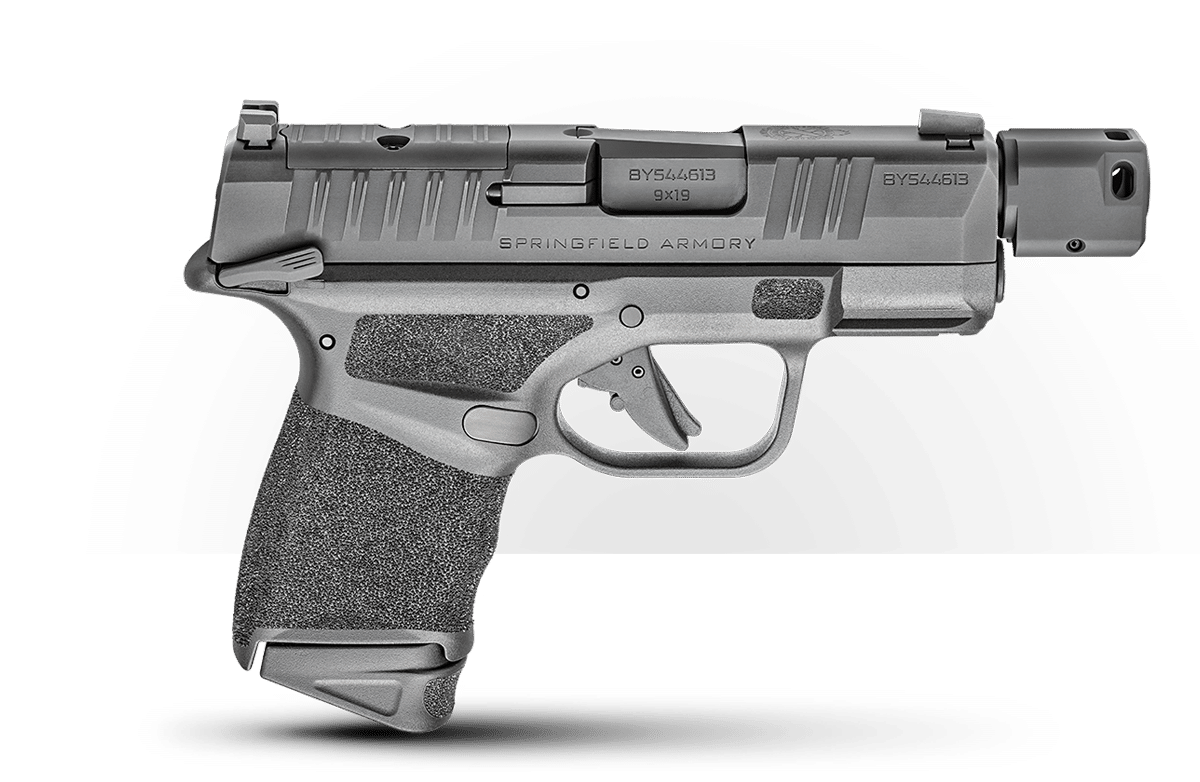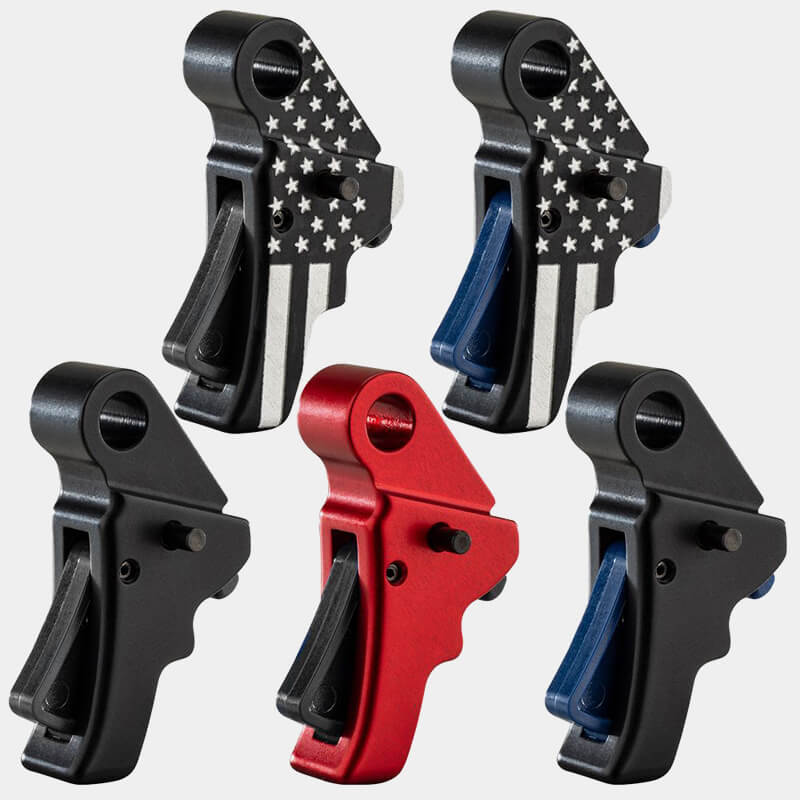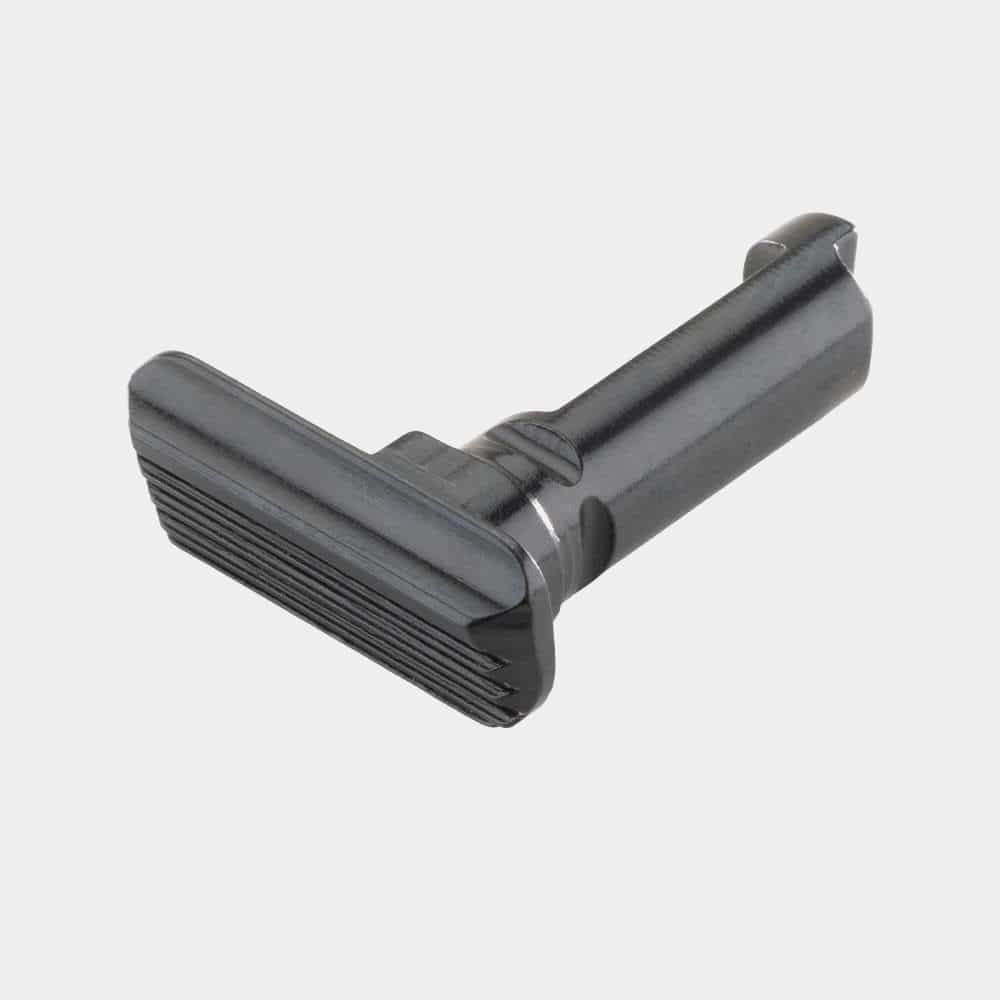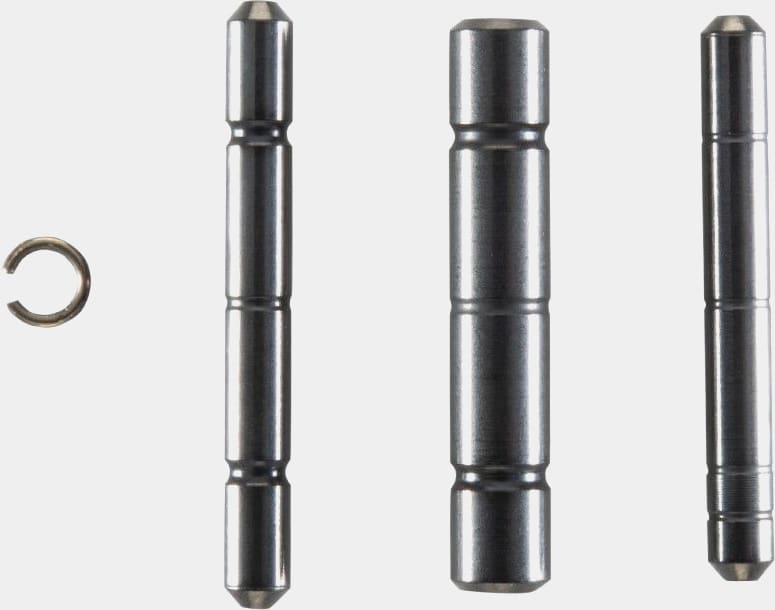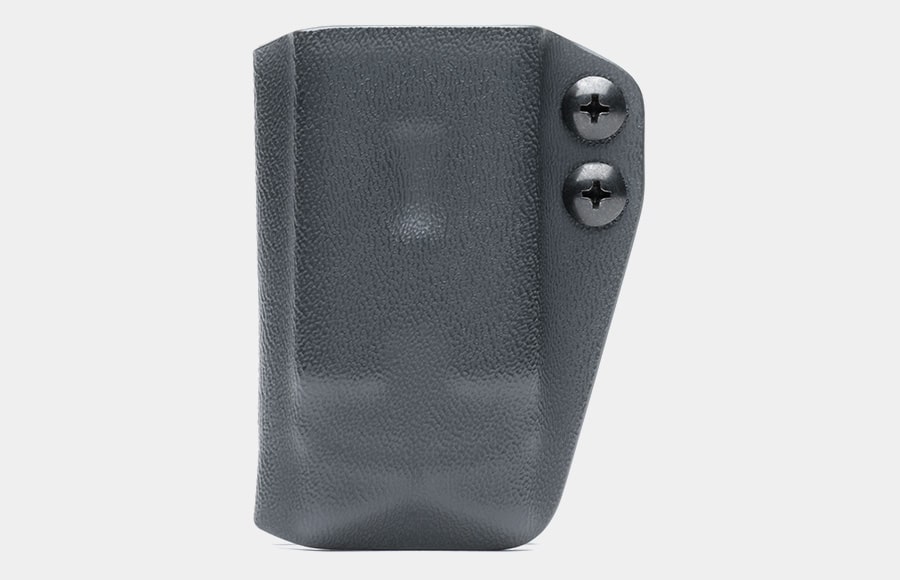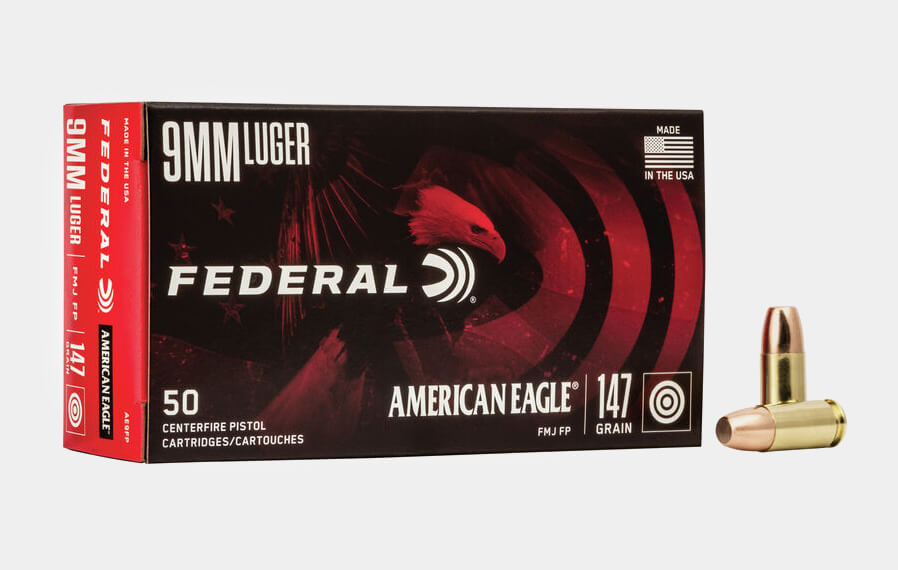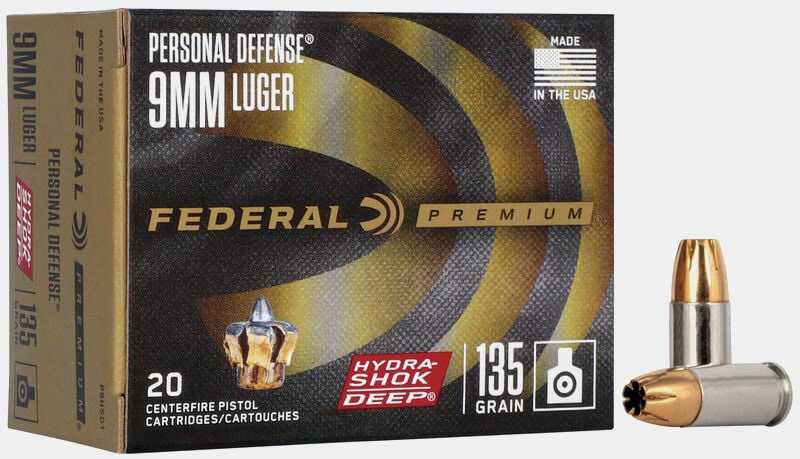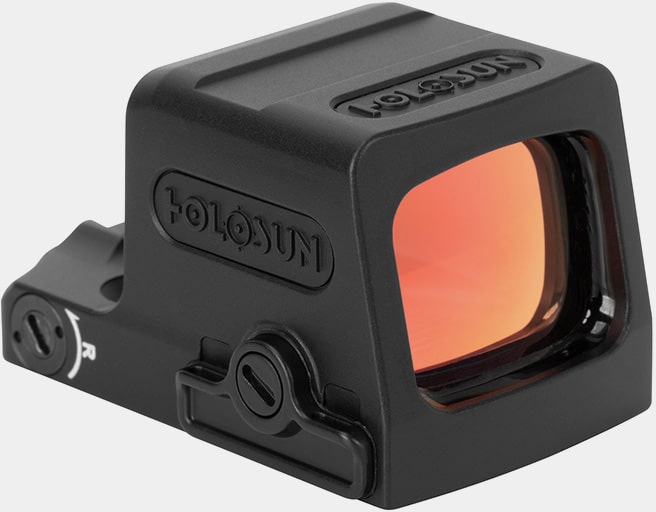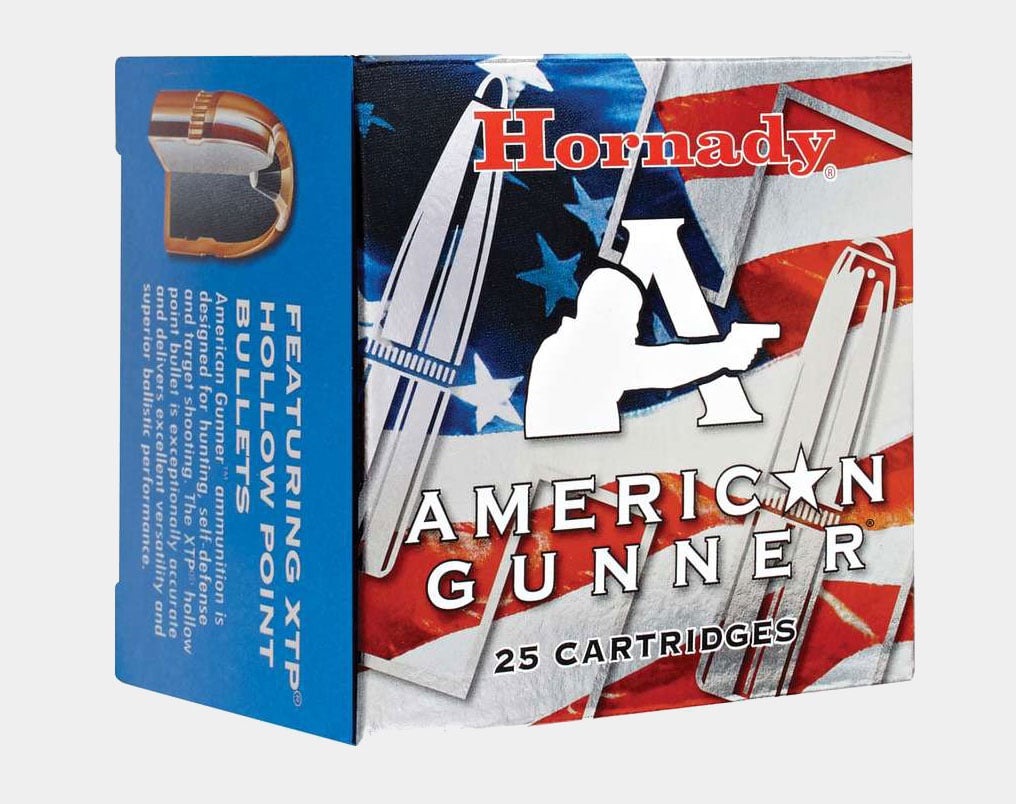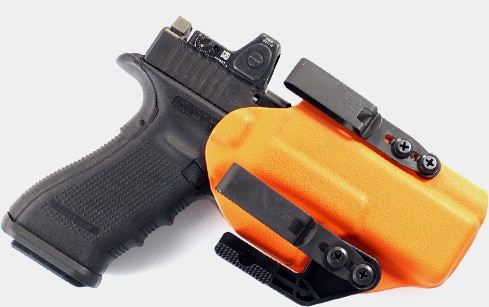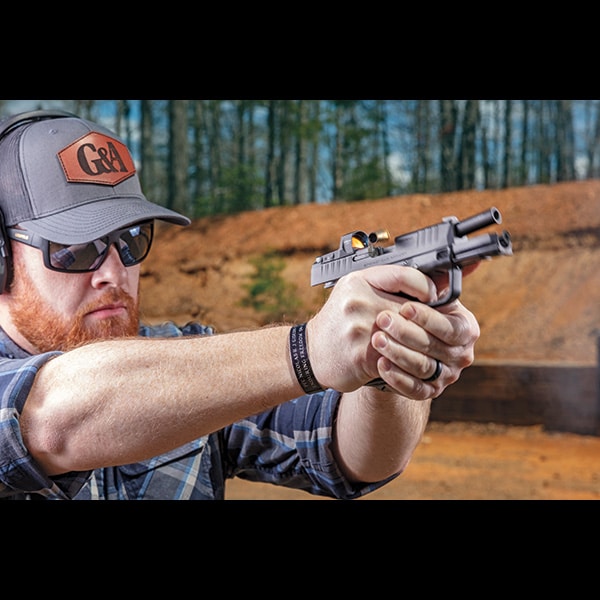Why I EDC the RDP
September 17th, 2025
9 minute read
In some ways, Springfield Armory’s 9mm Hellcat is quickly becoming the elder statesman of the micro-compact category. At its introduction in 2019, the pistol achieved a lot of firsts, including leading its category with 11+1 capacity as well as being the first Springfield pistol launched with a day-one optic-ready model.
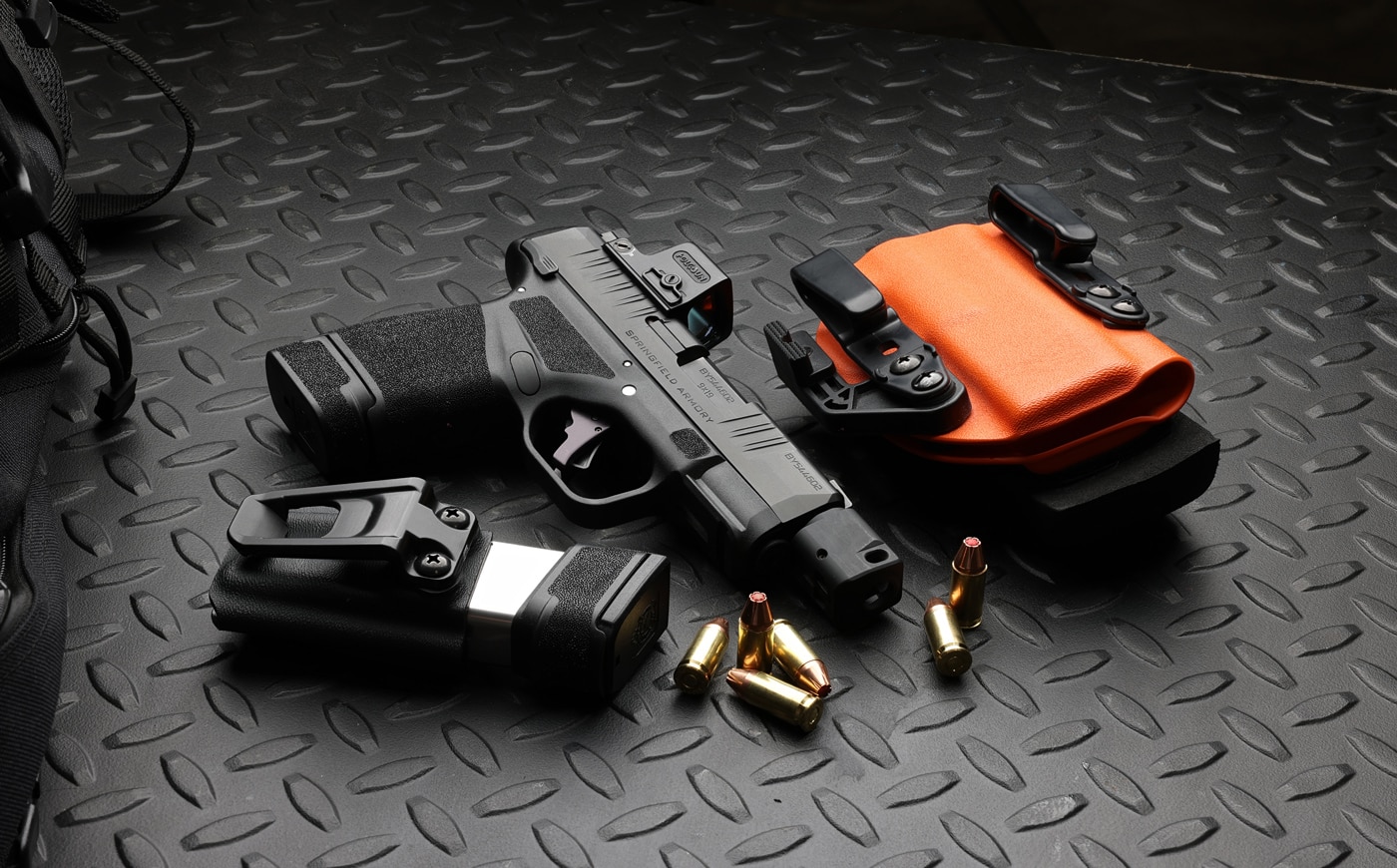
It wasn’t that long ago that new handgun rollouts started with a full-size base model, and the market had to wait for compacts and additional features to follow. The Hellcat was proof the tide had turned and that the concealed carry market would drive many new introductions going forward.
Rapid Defense Package
Further evidence came in early 2021 when Springfield Armory unveiled the Hellcat Rapid Defense Package (RDP). Like car makers adding an off-road trim, the RDP was all about showcasing the Hellcat’s capability. Where the original was optics-ready, at launch, the RDP came from the factory packaged with an optic.
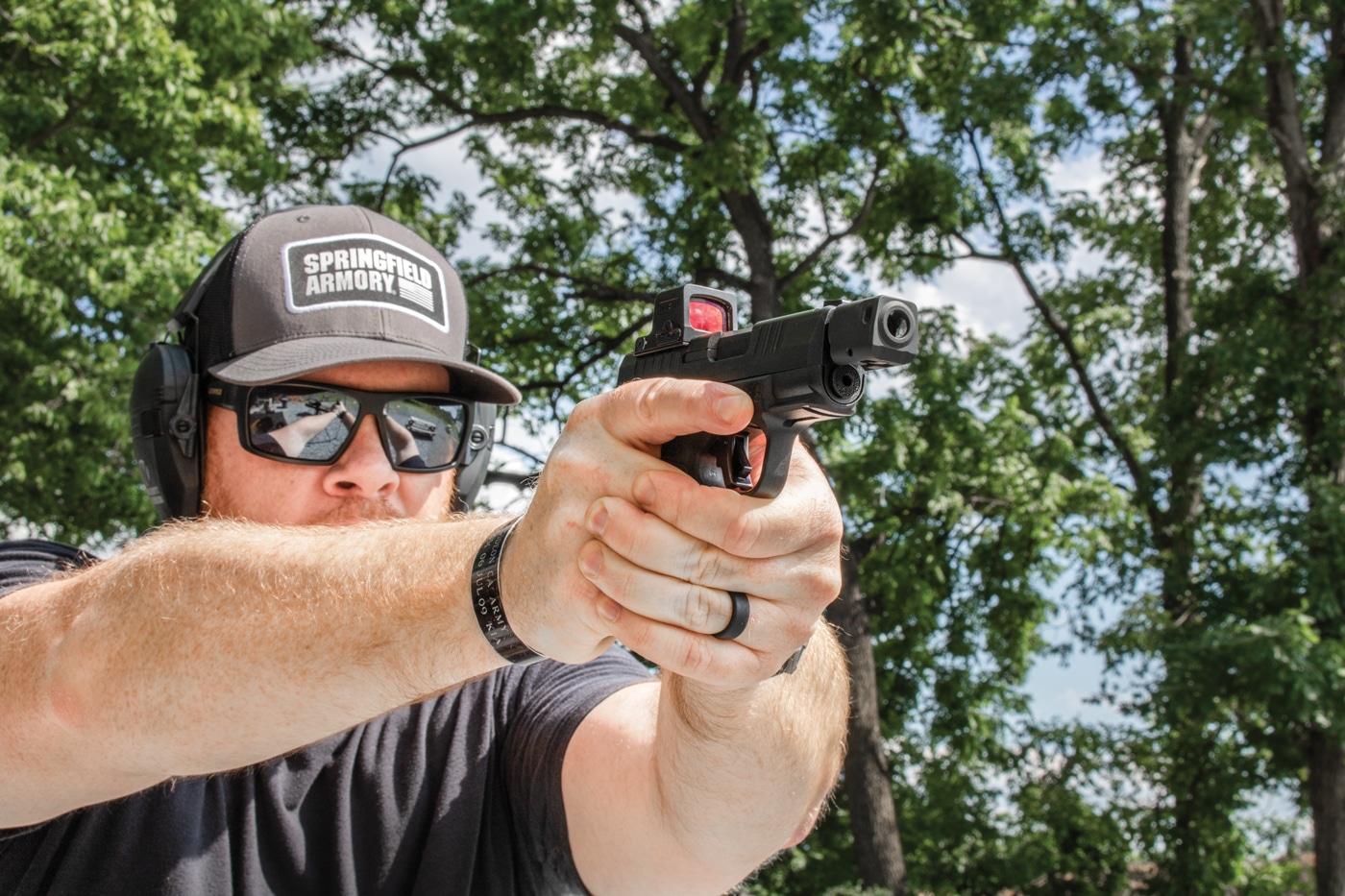
However, the most eye-catching addition was a self-indexing compensator mounted on a longer 3.8” barrel sporting 1/2×28 muzzle threads. Acting like a booster to redirect pressurized gas and combat muzzle rise, the RDP’s compensator effectively made the Hellcat the most shootable micro-compact pistol on the market, in my opinion.
Obviously, I had to have one.
I was lucky enough to procure an RDP — a model with the optional ambidextrous safety located at the rear of the frame — early on for review, and it quickly made its way into my carry rotation. While its overall profile with optic and comp was creeping toward the “compact” category, the Hellcat was noticeably slimmer than traditional double-stack striker-fired guns. That dimension makes a world of difference for concealed carriers, especially those who carry inside the waistband (IWB).
The old rule of thumb was to buy pants and belts with a couple extra inches around the midsection to accommodate a fightin’ iron. Narrow-framed micro-compact pistols, and the proliferation of flexible material in pant design, have made carry-sized clothes far less of an issue.
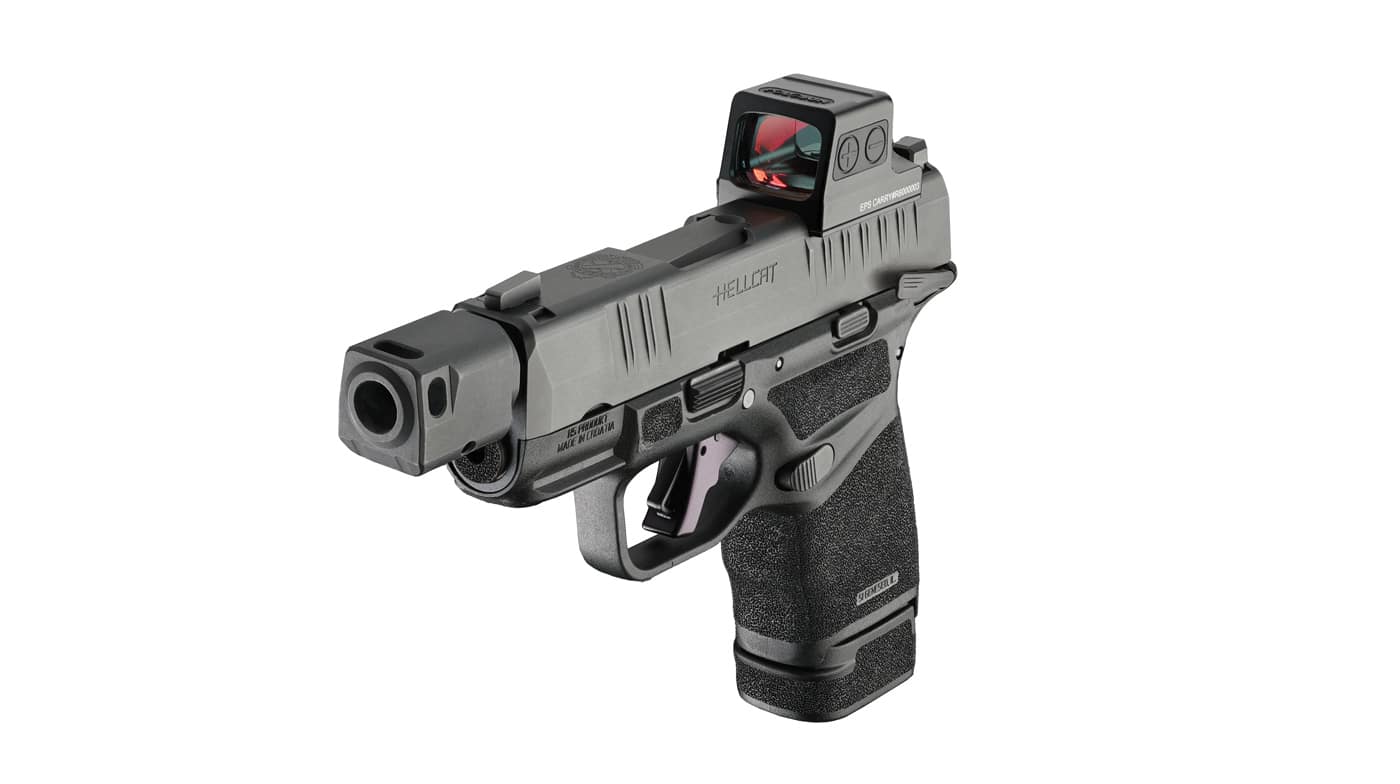
Magazine options were another boon to the Hellcat compared to more tenured compacts. Two magazines came standard with the pistols: an 11-rounder that could wear either a flat, flush-fit baseplate or a pinky extension pad; and a 13-round magazine with a textured grip extension. Not bad!
However, Springfield quashed all capacity considerations shortly after the RDP’s release by introducing a 15-round magazine. Ultimately, we would learn that the new magazines were designed for the then-forthcoming Hellcat Pro, just with a textured collar to mate with smaller-framed Hellcats. But at the time, launched as a standalone accessory, the mags put the Hellcat on even footing with the most popular carry pistols of the day.
Rapid Defense Plus
Daily carry, regular practice and personal preference inspired a few modifications and helped refine my everyday carry (EDC) kit. While the stock trigger on the RDP was quite good, I always like to try out new options whenever I can. To that end, I installed an Action Enhancement Trigger from Apex Tactical Specialties.
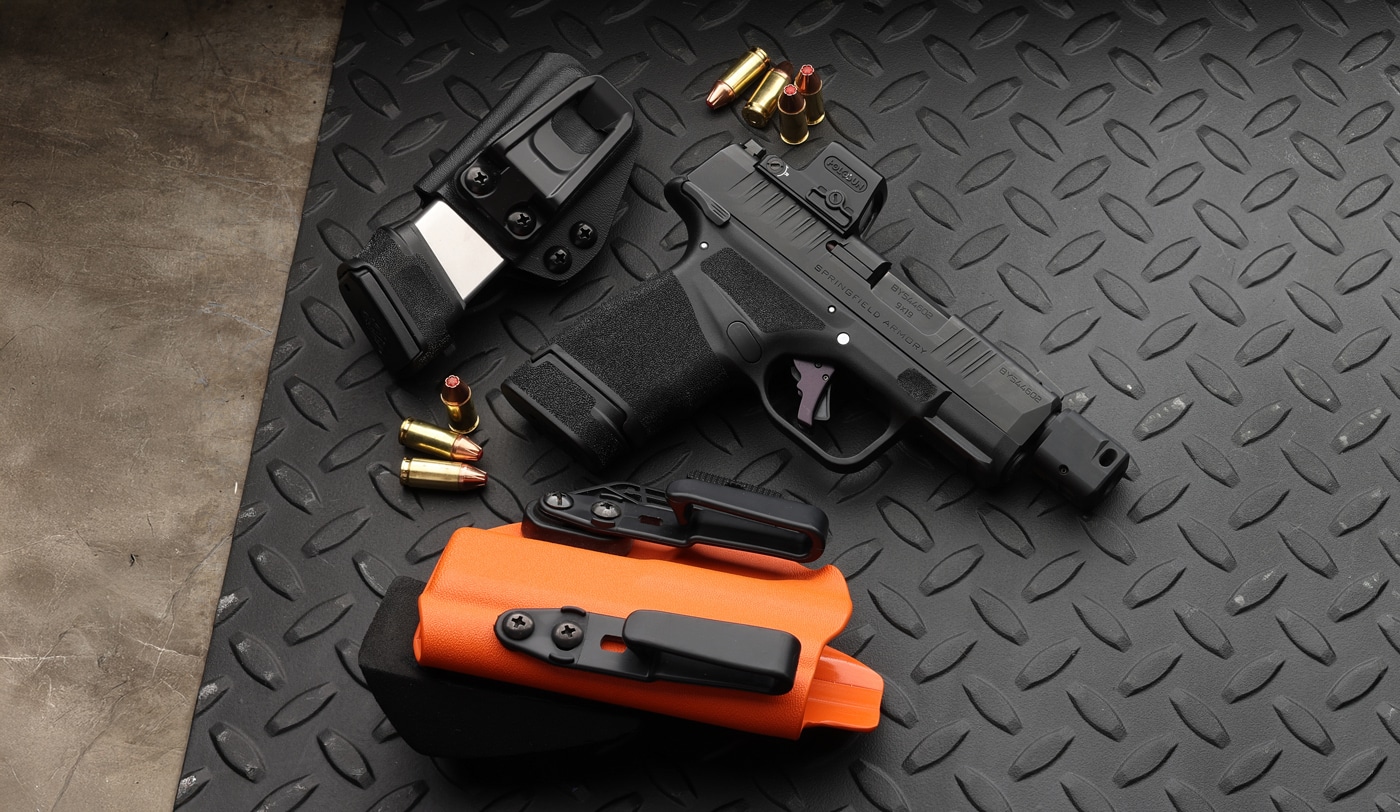
Comprised of a new trigger shoe, sear spring and striker spring, the Apex trigger offered a very smooth and short trigger travel, as well as very crisp break. Over time, it has also reduced the trigger pull weight. Measured by a Lyman digital trigger gauge, my RDP has worn-in to a 4-pound, 14-ounce pull.
Perhaps my favorite Apex part, though, is the extended takedown lever. Beyond having aggressive stepped serrations to help with firearm disassembly, it also offers a nice ledge for the support-hand thumb when held in a firing grip. Springfield had already included textured reliefs near the dustcover of the polymer frame, but the ledge provided by the takedown lever further enhances my control of the gun when shooting.
Also installed from Apex are the hard chromed frame pins — trigger pivot pin, locking block pin and sear housing pin. These aren’t functional upgrades — Apex offers them as spare parts — but I think the chrome adds a bit of style to the otherwise blacked-out pistol.

I’ve developed an affinity for Holosun’s line of durable and well-appointed electro optics. Through rigorous training and countless hours of carry, I’ve come to trust them on my defensive handguns. The RDP currently carries an EPS Carry optic from them with a red, 6 MOA reticle. Powered by a single 1620 battery that provides 50,000 hours of runtime, the optic comes standard with an RMSc-to-Holosun K adapter plate to simplify mounting on pistols with narrow slides.
As a general rule, I prefer the larger dots in smaller optics, and smaller dots in larger-lensed optics. In both cases, I want to find the dot as easily as possible. If the window is small, as on red-dot sights for micro-compacts I need the dot to pop, and 6 MOA reticles do that well. Larger optics with larger lenses tend to be more forgiving of imperfect presentations, and it’s easier to pick up smaller dots in the wider and taller field of view.
There is also intended use to consider — I want speed and accuracy from a small self-protection pistol, but I’m willing to give up a bit of the latter to improve the former in a close-quarters encounter. Still plenty accurate for deliberate shots at longer ranges, the larger 6 MOA dot is absolutely faster for my eyes to acquire than smaller reticles.
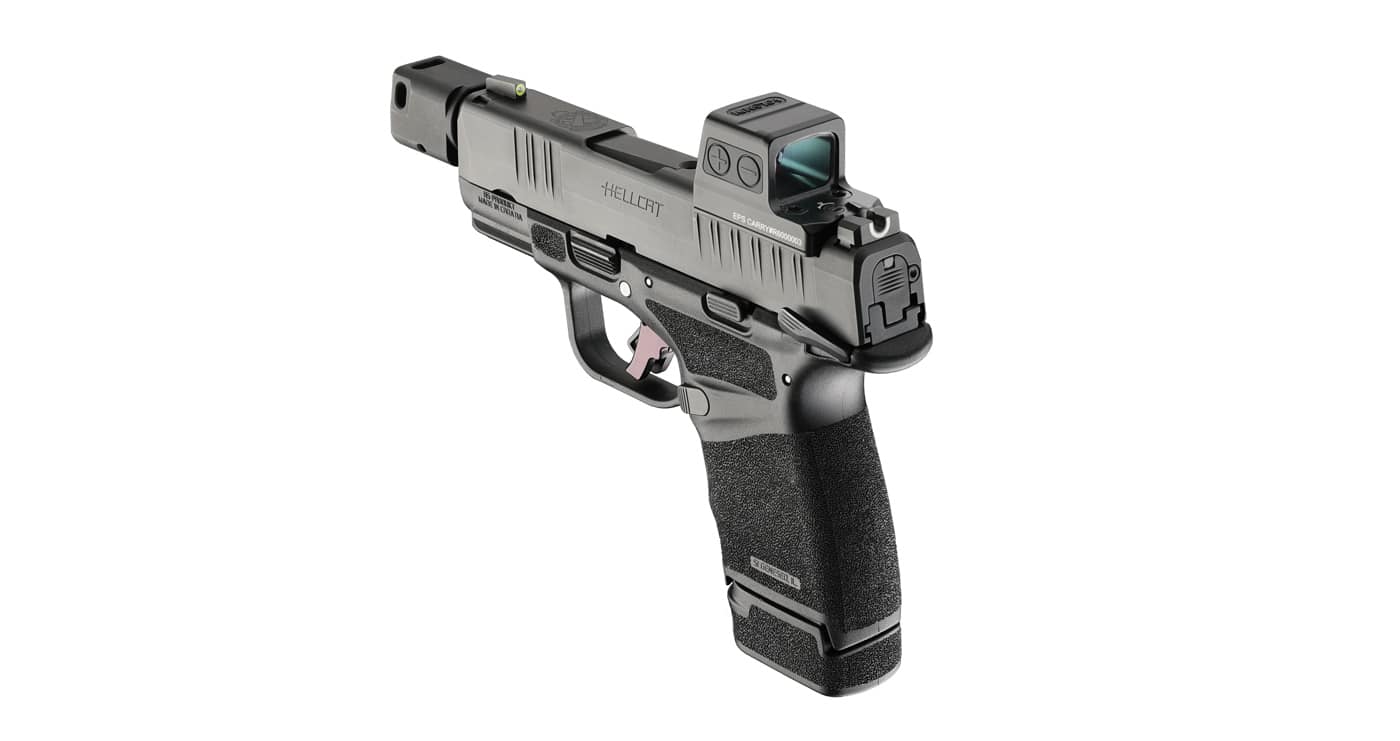
The EPS Carry is an enclosed red-dot optic, meaning the LED emitter is fully encased by the housing and both a front and rear lens. I’ve used and trained with both open- and closed-emitter optics extensively in all weather conditions, and can’t identify major advantages or shortcomings for either. Sights from reputable makers generally work as advertised, regardless of the lens count.
I do like the fact that the inevitable accumulation of lint and dust is very easy to clean off the rear lens of the EPS Carry. Considering that removal of debris is routine maintenance on oft-carried sidearms, particularly when concealed against the skin, perhaps enclosed optics do hold a bit of an edge.
For magazines, my favorite carry configuration is to have a 13-round magazine in the gun. Among the available choices, it’s the Goldilocks option: Not too big, not too small. Its slightly extended baseplate still conceals without issue while providing +2 capacity over the flush-fit mag, and it allows me a full firing grip.
For a reload, I usually carry a 15-round magazine in a Crucial Concealment Covert Mag pouch. The pouch is a simple, low-profile unit that can be worn inside-the-waistband (IWB) or outside-the-waistband (OWB) and accommodate both right- and left-handed shooters.
Finally, my holster is the AIWB Wing Claw 2.0 from JM Custom Kydex. I’ve been ordering holsters from owner Tony Mayer for at least a decade, and I got this particular unit shortly after the launch of the original Hellcat.
The problem with carrying subcompact guns IWB, particularly at the appendix position (AIWB), is that the short slide assembly does not provide enough of a “keel” below the beltline to keep the gun from rolling over the top of the belt. JM Custom Kydex was early to accommodate AIWB carry, and savvy enough to diagnose this issue and offer solutions. The company makes “Long” configuration holsters that extend as if the pistol’s slide and barrel were an inch longer. Too, foam wedges are offered for the back of the holster to apply outward pressure on the muzzle, thus rocking the grip frame closer into the body. Concealment claws and various belt attachments are also available for the fully custom holsters, as are options for optic cuts and skin guard height.
When the Hellcat RDP came out, it was a happy coincidence that my long Hellcat holster was a perfect fit. JM Custom offers holsters specifically patterned for the RDP, but I’ve haven’t had the need to switch.
Ragged Hole Performance
It wouldn’t be much of a review if I didn’t put the RDP through its paces. The Armory Life’s accuracy protocol includes testing three loads for accuracy and velocity at 7 yards — the prescribed distance for compact pistols. I opted for variety in both bullet weight and intended purpose with my ammunition choices.
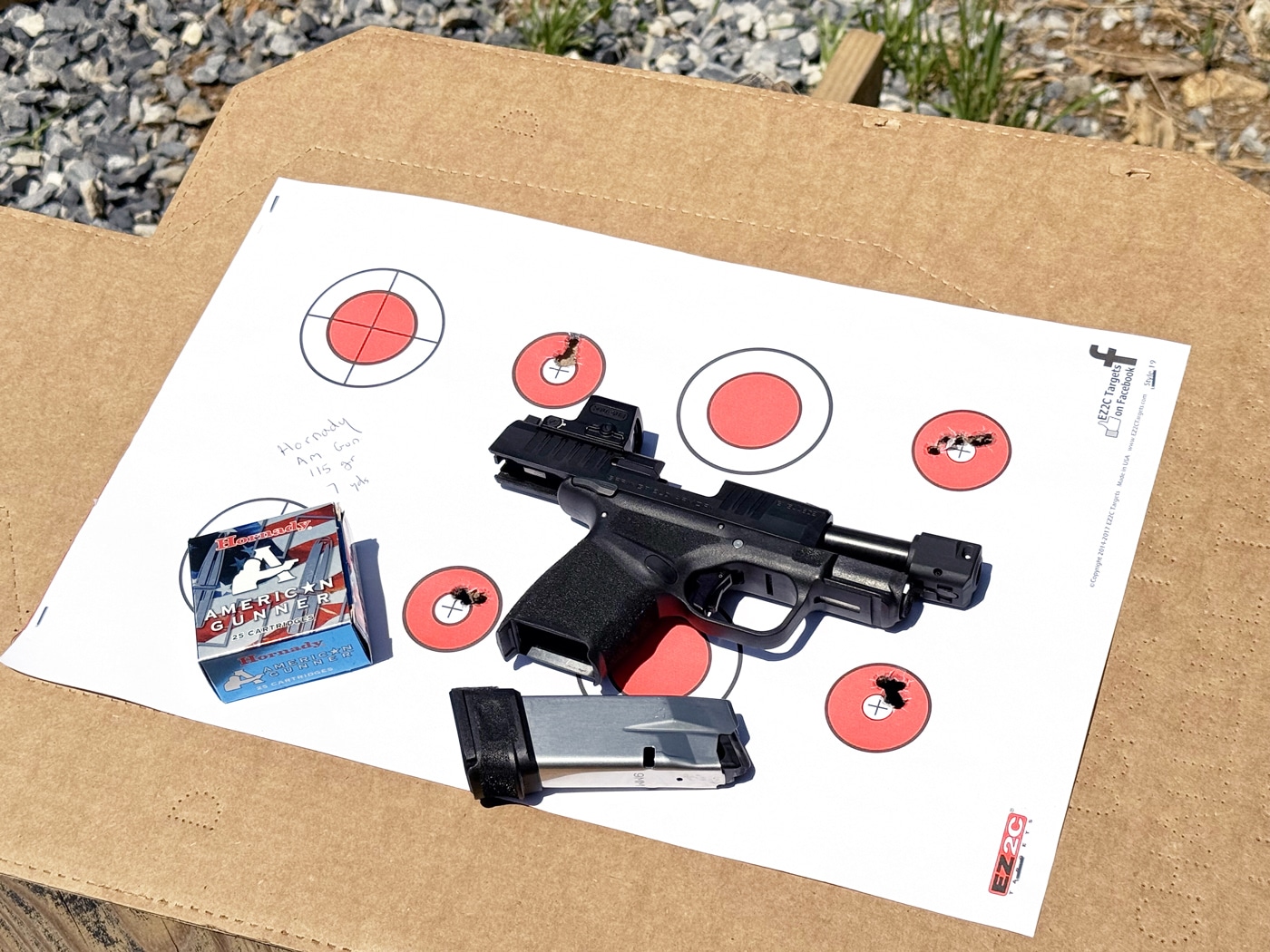
Reliable, affordable and readily available, Federal’s American Eagle brand is a range-day staple, and I opted for the heavy, 147-gr. flat point load. On the other side of the spectrum, Federal’s Hydra Shok Deep personal defense ammunition, topped by 135-gr. jacketed hollow points, was tailor-made for self-protection handguns like this. For an all-purpose option, Hornady offers the American Gunner brand, which includes a 9mm load with a 115-gr. XTP bullet.
Shooting Results
| Ammunition | Velocity | Group (best) | Group (average) |
|---|---|---|---|
| Federal American Eagle 147-gr. FMJ FP | 1,039 fps | 0.48″ | 0.64″ |
| Federal Hydra-Shok Deep 135-gr. JHP | 1,029 fps | 0.54″ | 0.61″ |
| Hornady American Gunner 115-gr. XTP | 1,151 fps | 0.40″ | 0.41″ |
For each ammunition, I fired one, five-shot sight-in group. Then, using a Ransom Rest Multi Cal. Steady Rest for stability and a chronograph to measure velocity, I fired three, five-shot groups for accuracy. The results with the Hellcat RDP were impressive. The average of best groups across the three loads was under half-an-inch at a mere .47”, and the overall average was close behind at just .55”. It was interesting to see three diverse loads perform so similarly, with each producing at least one, one-hole group.
Once the hairs were split, the best performer of the bunch was Hornady’s American Gunner load with 115-gr. XTPs at 1151 f.p.s., as measured by a Garmin Xero C1 chronograph. Only the sight-in group showed any kind of dispersion, likely due to the faster rate of fire; the three measured groups were near-identical groups that looked more like three rounds touching than the actual five that were fired.
Every time I run a test with American Gunner I come away impressed. It’s a versatile load well suited for both competition and defense that offers tremendous accuracy and consistency, while still maintaining a lower price point than many of its more specialized counterparts.
Parting Shot
While I train regularly with my personal carry gun, and a close facsimile in the form of a similarly equipped Hellcat Pro, it was really cool to put this pint-sized lion on the bench and let it roar.
Despite having owned the pistol for several years, conducting a range test like this reinforced my reasons for gravitating toward the RDP model and validated my choice in options. From the self-indexing comp to the optic and the minor enhancements throughout, nothing boosts confidence in one’s carry configuration like a morning spent cutting ragged holes in cardboard targets. It was reliable, easy to control and very accurate.
Compact yet capacious, discreet and deadly accurate, Springfield Armory’s line of Hellcat pistols is rightly seen as top of the heap among modern micro compacts. The comp’d Rapid Defense Package takes the bite out of recoil and reigns supreme for shootability. Sounds like a winner to me.
Editor’s Note: Please be sure to check out The Armory Life Forum, where you can comment about our daily articles, as well as just talk guns and gear. Click the “Go To Forum Thread” link below to jump in and discuss this article and much more!
Join the Discussion
Featured in this article
Continue Reading
Did you enjoy this article?

 144
144




